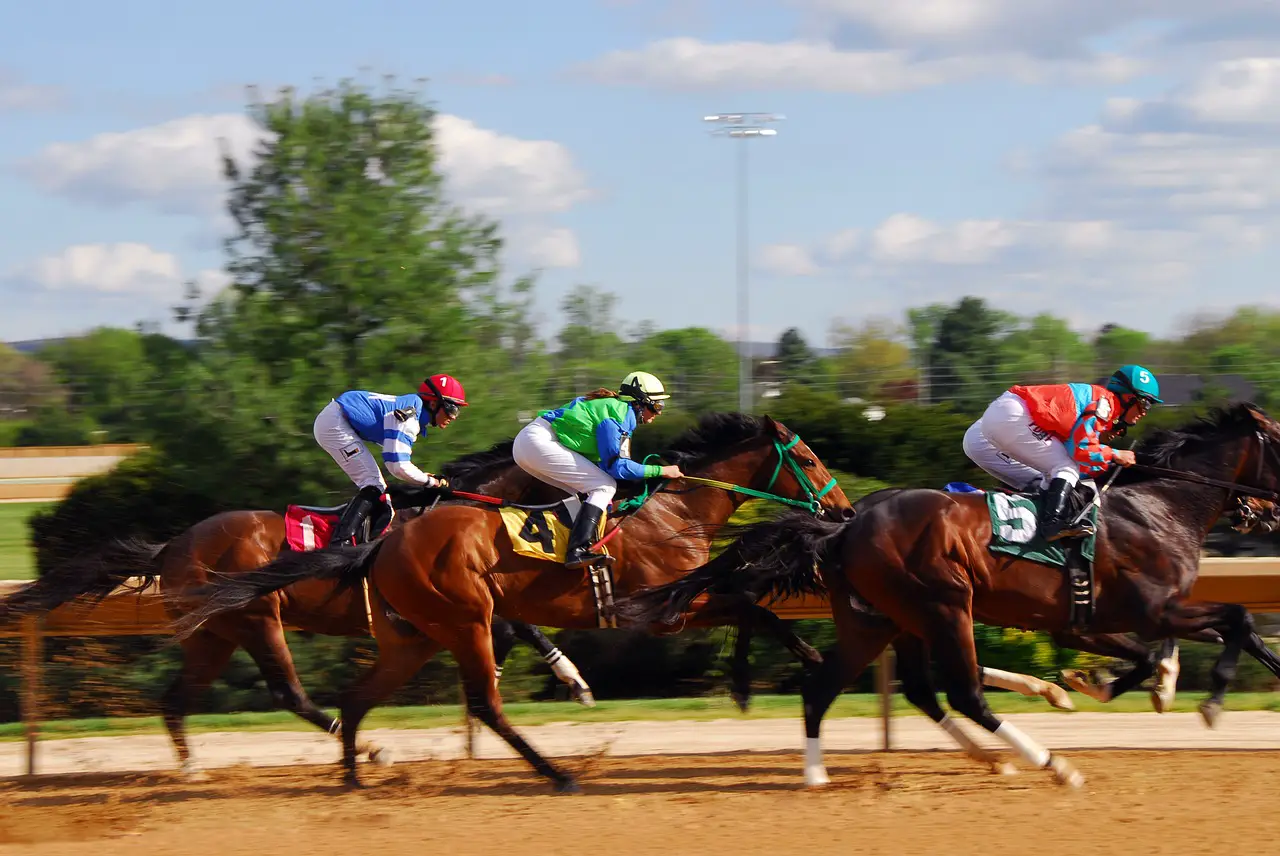Last Updated on June 18, 2020 by Allison Price
Speed is one of the best things we admire on horses apart from their beauty and strength. Different breeds excel at racing and each of them is popular for many reasons. Here, we will discuss a variety of horses which are then considered the fastest in the field.
Thoroughbreds are the fastest horse and they dominate the horse racing industry. They can hold their speed for quite a long distance. Thoroughbreds hold the Guinness World Record for the fastest top speed at 70.76 KPH.
The quarter horses on short distances are faster than the thoroughbreds. They will reach a high top speed and also the fastest breed when it comes to acceleration. Unlike thoroughbred, a quarter horses couldn’t go on running for a long period of time.
Top 5 Fastest Horse
Thoroughbreds
Known as hot-blooded, their temperament is competitive, energetic, and full of fire. Their slim and tall conformation makes them quick, agile, and powerful. Their beauty makes them the favorite racing animal to watch.
American Quarter Horse
This breed is then known for its versatility, adaptability, and sprinting capabilities. Quarter Horses have reportedly topped out at speeds of around 55 MPH.
Arabian
The breed can go a distance and make it in record time. Arabians are the best when it comes to endurance. They have a unique ability to conserve energy, making running long distances easier.
Standardbreds
Standardbreds are not as well-known as the previous breeds. But, they have some serious speed of their own. They excel at harness racing over every other breed. They’re built like a Thoroughbred. They have the same strong shoulders and hindquarters that give the horse its power and speed.
Appaloosa
This breed is then revered for its speed, strength, endurance, and durability. This makes them a good combination of the breeds above. They became well known not only for their spots but because they make excellent hunting horses.
How Fast Can a Horse Run?
At top speed, a Thoroughbred can run up to 80-88 KPH, while Quarter Horse can run up to 70-75 KPH. The average speed of a horse gallop is approximately 48.2 kilometers (30 miles) per hour.
Horse Speeds and Gaits
All horses move with four basic gaits. The walk is the slowest gait. A trot is a next speed up from walk. It is a two-beat gait where the horses’ front and back legs move in sync. The trot is the equine equal to jogging and is in fact referred to as a jog in some disciplines. The canter, also called lope, is a three-beat gait that is faster than trot but not a full gallop. A gallop, which is what racehorses are doing on the race track, is the fastest gait. It is a four-beat gait. This is the gait that should be then referred to as running.
Step by Step to Increase Your Horse’s Speed
STEP 1: Set up a training schedule.
Running your horse on a daily basis can condition its body and performance. This can help you measure her progress and keep you on task. Keep your training consistent for the first eight weeks. Once you’ve built up the horse’s endurance, you can decrease the number of training days to four or five. You may also want to set a specific distance, such as four miles, and split up each section by miles. Add a variant such as a sprint every couple of days to change the training routine. It can help develop your horse’s muscles much better.
STEP 2: Check your horse’s mount.
Comfort is an important factor in your horse’s ability to speed up. It can also make conditioning easier for you and your horse. You need to make sure that your horse’s mount is then fitted. And that, nothing is also broken so your horses feel relaxed.
Check the following items on the mount:
- Saddle tree, to make sure it doesn’t move
- Saddle bars, for loose rivets
- Flaps, for weak or loose stitching
- Billets, for dryness
- Stirrups, for dryness and wear
- Bridle, for rough edges that could harm your horse’s delicate mouth
STEP 3: Warm up your horse.
Before you start any conditioning, allow your horse to walk at a leisurely pace for 15-30 minutes.
STEP 4: Trot your horse.
Encourage your horse to trot with verbal or physical cues such as clucks or a gentle push from the stirrups. Add sprints, or long lopes, to the trotting phase to build your horse’s muscles. Increase trotting to a lope. About half of your horse’s training program should be at a lope, or running, pace. Once she is comfortably trotting, cue her to speed up into a run.
STEP 5: Cool down your horse.
After training, walk your horse as a way to cool it down. Give your horse a treat for a good workout and make sure she has fresh food and water. Providing her proper nutrition and hydration and can help her run faster.
STEP 6: Assess your horse’s condition.
Allow your horse enough time to rest between training sessions. This can help prevent injuries. If your horse seems lethargic or shows signs of injury such as limping, it may not be then rested enough. Your horses may have a condition that needs immediate medical attention from a vet. It’s also common for overtrained or out of shape horses to not react faster to commands or cues. Remember to not push your horse too hard and give it ample time to recover between sessions.
STEP 7: Work with a coach.
If you are not an expert at training horses, consider hiring a coach or professional. They can then suggest a way to remedy the issue and help your horse get faster and stronger.


